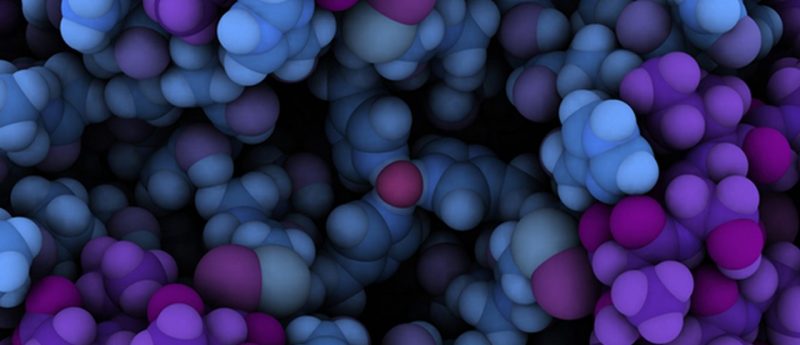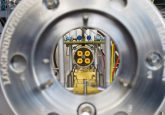Interview with Kelli Jonakin (AB SCIEX) on large molecule analysis by LC–MS

 Kelli is the Global Lead Scientist for Biotherapeutic Peptide Quantitation at AB SCIEX, and is based in Seattle, WA. She joined AB SCIEX in 2011, where she has focused on MS workflows for biopharmaceutical analyses. She received her B.S. in Biochemistry from University of Puget Sound (WA, USA) a Ph.D. in Pharmacology from the University of Colorado Health Sciences Center (CO, USA), and completed a postdoctoral fellowship in Biochemistry at the University of Wisconsin-Madison (WI, USA).
Kelli is the Global Lead Scientist for Biotherapeutic Peptide Quantitation at AB SCIEX, and is based in Seattle, WA. She joined AB SCIEX in 2011, where she has focused on MS workflows for biopharmaceutical analyses. She received her B.S. in Biochemistry from University of Puget Sound (WA, USA) a Ph.D. in Pharmacology from the University of Colorado Health Sciences Center (CO, USA), and completed a postdoctoral fellowship in Biochemistry at the University of Wisconsin-Madison (WI, USA).
Could you tell Bioanalysis Zone a little about your current role at AB SCIEX?
I am the Global Lead Scientist for Biotherapeutic Peptide Quantitation. I lead our applications team, and together we work directly with our customers to develop and optimize MS assays for their peptide/protein therapeutics. My background in biochemistry helps me ensure a smooth transition for our customers, from performing characterization and quantification of small molecules to large molecules. My organization has been active in finding ways that LBA users can leverage MS as a complement to their traditional workflows. Through all of this, I serve as an active interface between customers and the AB SCIEX R&D team. Our customers and market feedback drive our future products.
You have recently been working on the development of protein and peptide quantification methods – what are the challenges you have faced?
Each assay has its own challenges depending on the molecule type (e.g., drug or an endogenous biomarker). For some assays the levels of the compound may be low within a complex plasma/serum matrix, and achieving low limits of detection can be difficult. This is especially true for drugs that have low bioavailability or high clearance (e.g., peptide/protein therapeutics), or simply adsorptive properties that may compromise assay recovery and sensitivity. I am fortunate to work for a company that has a significant wealth of experience, expertise and technology in this area. The dynamic range and sensitivity of the QTRAP® 6500 enables analyses in a single run, with less sample preparation and chromatographic development time than would otherwise be necessary. This means better results, faster.
In other cases, therapeutic protein concentration is not a limitation, but rather the selective detection of a specific protein, or a modified form of the protein, is the goal. In complex biological matrices it is common to have multiple interferences, or nearly isobaric species, which can complicate analysis. Through AB SCIEX’s history in collaborative development with the industry, we have a number of selectivity options that quickly and easily provide alternatives to get to the answer faster. Thanks to our partnership with our collaborators and customers, we have published several technical notes highlighting utilities of QTRAP®, MRM3 or SelexION™ in peptide and protein quantitation. These articles are available on our website.There are a number of examples where these tools significantly shorten chromatographic run time, remove co-eluting interferences without laborious additional sample preparation or expensive LC columns, and most importantly require a ‘one click’ alternative to what would otherwise be a major roadblock in assay method development. At the end of the day these tools allow scientists to get to the right result much faster and with greater confidence.
What are some of the common challenges associated with LBA?
Firstly, we should acknowledge the strengths of LBAs; they are relatively straightforward to execute, generally require limited sample preparation and can provide great sensitivity. However, the high cost of developing appropriate reagents and the long time (usually months) it takes to obtain those reagents pose some serious challenges for the users in terms of reducing cost per sample. In addition, increasing selectivity needs can come with a large tradeoff in sensitivity. Matrix effects, cross-reactivity and a significantly limited dynamic range can reduce the overall efficiency of the analysis. Therefore, although a well-designed LBA is a good choice, complementary or replacement LC–MS/MS assays of biotherapeutics, developed in days, are increasingly being used for obtaining robust, reproducible and sensitive methods.
Large molecule analysis by LC–MS is generating significant interest within the bioanalytical community. How can it be used as a complementary technique to LBA?
We certainly see MS as a complimentary technology to LBAs, and from many conversations with customers we are careful not to say that one or the other offers all of the answers. Especially in the discovery and development phase where a large number of drugs are tested for their safety and efficacy, LBA assay reagent cost and development time might be a rate limiting step. Here we see the opportunity for an LC–MS platform complimentary to LBA assays in terms of selectivity and faster method development to accelerate the drug discovery and development process, and bring more drug candidates into the product pipeline. However, as the complexity of new biotherapeutics has increased, new challenges have arisen to traditional LBA methods that MS is uniquely positioned to address. The most obvious example is antibody–drug conjugates (ADCs). We have been fortunate enough to work with most of the industry leaders in this area, which also provided us with the unique opportunity to learn quite a bit ourselves. Things such as drug–antibody ratio and site specific payload identification/quantification are best done by MS, while tests for total antibodies are usually still done via the traditional LBA methodology. There are quite a few other exciting compounds that present similar, but different, challenges such as PEGylated peptides/proteins and even fusion proteins. It is the combination of mass selectivity and sensitivity only achievable via MS that can address the high levels of complexity.
What do you think are the most important factors to consider in the early development phase of biotherapeutics?
It is extremely important to obtain comprehensive information about the safety and efficacy of the drug candidate early on. Cassette dosing is a commonly used technique to identify potential drug candidates from 100’s or 1000’s of drug-like compounds. Multiplexing capabilities will have huge benefits. I have been particularly impressed by the working relationship between the LBA and ‘traditional’ MS teams in this portion of the process. The quantitative knowledge and molecular biology backgrounds of many LBA teams help inform the design of many MS experiments. Ultimately, the decision to understand exactly what you need to measure is paramount – whether it be free, bound, total concentration, whole protein, or if a signature peptide is sufficient. The sensitivity and selectivity requirements will determine the decision on what technology to use and at which stage. MS is particularly well suited to this area given the speed and flexibility in development (e.g., reducing the need to develop reagents) and the additional information on catabolite/metabolite that can be gathered ‘free of charge’ while conducting quantitation. It is in this area that we have seen the fastest adoption of MS as a complimentary technique to LBAs.
Are there any specific talks or workshops you are particularly looking forward to attending at the upcoming WRIB conference?
I would like to highlight some posters and oral sessions presented by our customers showing the benefit of LC–MS for protein and peptide quantitation. Dr Fabio Garofolo (Algorithme Pharma) will give a talk titled “LC–MS assay for PEGylated protein quantification using surrogate peptide generated by tryptic digestion”. We also have a series of webinars coming up in collaboration with Bioanalysis Zone after WRIB focusing on peptide and protein quantification. The first of these is scheduled for the 20th March, with Dr Fabio Garofolo being the speaker.
I am also very excited about our collaborative work with Sigma Aldrich on universal peptide quant method using SILUMab standard and QTRAP® 6500 LC–MS/MS system with microflow. It is a nice complementary poster to one of the oral sessions titled “Recent developments in Large Molecule Bioanalysis by LC–MS,” chaired by Dr Dawn Dufield (Pfizer).
In addition there are some must see talks on ADC quantification in a dedicated session titled “A complex bioanalytical problem” by Dr Steve Alley (Seattle Genetics) and Dr Surinder Kaur (Genentech).
Presentations such as “LBA Bioanalytical challenges” by Dr Binodh DeSilva (BMS) and many others would also be very valuable for Bioanlaysis Zone readers.
What are you excited about working on over the next year?
I am really excited to be part of this great innovation both from making life saving medicines and the technology that helps bring these novel drugs to the market faster and helps save many lives. To follow on from my statements earlier, ADCs are really exciting from a scientific perspective, as well as a new tool in the battle against cancer. The simple idea that you can attach a cytotoxic agent to an antibody protein and specifically target its delivery to certain cells is amazing. In our collaborations, we are focusing on workflows that both qualitatively and quantitatively assign the location of a drug on a monoclonal antibody. This is increasingly important as our customers are seeing that drug–antibody ratio calculations are not always enough to determine potency. We have already developed some great tools around this unique analysis, and I look forward to digging into the characterization, quantitation and catabolite/metabolite ID of ADCs at both intact and peptide level. The study of biotransformations of ADCs, and other classes of compounds, is another exciting area in which we’re working. As the field continues to expand to compound classes other than traditional monoclonal antibodies, determining biotransformations is now necessary, and it is an area in which AB SCIEX is uniquely positioned to address. We’re exploring applications of SWATH™ (an unparalleled technique to collect quantitative and qualitative data) on the TripleTOF system, (an HRMS technology) and software tools that are developed for the iopharmaceutical industry to provide answers faster and more confidently across the drug discovery and development process.






